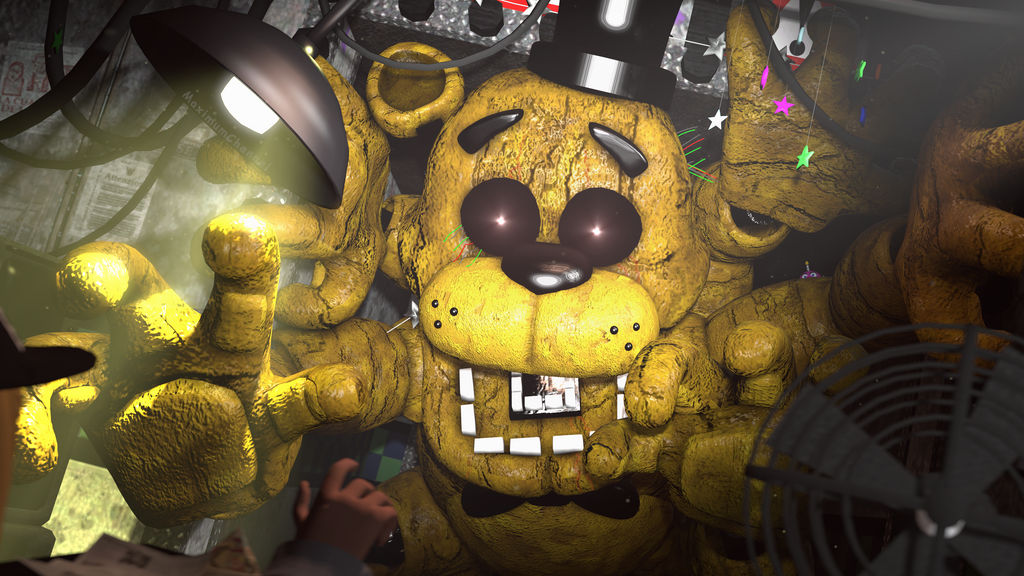Cultural impact is often measured with numbers: Box office sales, streams, games, and merchandise. When a piece of media is able to satisfy the latter and collect a mass following on social media, it speaks volumes for its genius. Five Nights at Freddy’s, the game, launched in August of 2014. The horror game with simple mechanics but complicated storylines quickly dominated YouTube, which remained the platform where FNAF mainly thrived. The universe was not ready for Scott Cawthon’s best work. “Security Breach,” one of the FNAF games, made its characters Freddy Fazbear, Bonnie Bunny, Chika Chicken, and Foxy the Pirate icons of the internet. The core gameplay mechanic involves monitoring security cameras to track animatronics’ movements, each with its behaviors and patterns. The limited resources, such as power for lighting and security doors, add a strategic element to the game. Balancing surveillance and power management creates a challenging and nerve-wracking experience that requires quick thinking and adaptability. Since then, Five Nights at Freddy’s evolved into nine main games, five spin-off games, and an overwhelming amount of lore analysis. Known for its suspenseful gameplay, unsettling atmosphere, and intriguing lore, FNaF has captivated gamers worldwide. Video essays, Reddit forums, and Tumblr posts all explored the key elements that make this series a unique and spine-chilling experience. Although Five Nights at Freddy’s is best played with yourself (as opposed to watching gameplay) to experience the real deal, the fandom longed for more. The fans of this franchise have constantly longed for a movie, and it is finally here.
The dark, claustrophobic setting of Freddy Fazbear’s Pizza, coupled with eerie animatronic characters, sets the stage for a nightmarish experience. The game’s minimalistic graphics and strategically placed jump scares keep players on the edge of their seats, creating an intense sense of vulnerability. Naturally, the movie replicated the same horror feeling but lacked a considerable part of the original appeal. One of the most intriguing aspects of FNaF is its intricate and mysterious lore. Unlike the movie, the game story unfolds gradually through cryptic messages, hidden Easter eggs, and mini-games, inviting players to piece together the dark history of Freddy Fazbear’s Pizza. Yet, the movie failed to capture the very essence of the franchise that everybody loves: the lore. The film followed the lore loosely, taking creative charge of the storyline to fit their narrative more. Watching it felt offensive. Right off the bat, the movie starts with a dragged-out introduction of the security guard. This man, played by Josh Hutcherson, named Mike Schmidt, is the most insignificant part of the lore because he is the character controlled by the player. This made me mad for two reasons: the security guards storyline is simply not attractive, and it is a waste of time to distract from the fact that the writers did no research on the fandom. I assume they found the lore on a YouTube video and thought it was optional to follow. It is not optional, and nobody cares about Mike Schmidt. Trying to make him more interesting by giving him a love interest did not work either. His brother was kidnapped early in the movie and is hinted to have been taken by the Purple Man, Or that’s what everyone else thought. There is no mention of the Purple Man, Ennard, and other essential canon aspects of FNAF. The very few good parts of the movie are the appearance of the children as Mike Schmidt’s hallucinations, the portrayal of the springtrap suit malfunction, and what I assumed to be the Bite of ‘87, but considering the lack of research into the lore, I doubt they even intended that. Incorporating other fascinating aspects, like the alternate universes in Fazbear Frights, would have made the movie much better
Additionally, FNAF is renowned for its well-executed jump scares, providing heart-pounding moments that leave a lasting impact. The game’s ability to tap into psychological horror, playing on the fear of the unknown and the uncanny, contributes to its success. The anticipation of a lurking animatronic and the anxiety-inducing sounds make for a truly visceral experience. The movie did not wholly disappoint in this category. However, it did not impress me either. If I speak personally, I did not get jumpscared at all, when compared to the actual nightmares I had as a child playing the game. Of course, my age is the changing factor, but an adolescent has the same ability to be scared as a child, and I was expecting them to deliver so. Seeing the animatronics in such an honest and raw image was definitely thrilling and satisfying to my old FNAF heart. However, it was not rough. To be completely honest, Springtrap looked cute, not horrifying. In the game, however, he is the most terrifying character, in my opinion. I could not knock the movie crew too much; admittedly, they nailed the look of the security room: it was dirty, dark, and scary. Although an attempt was clearly made, the movie did not accomplish the same horror feat that the game did.
Whether you’re a seasoned horror enthusiast or a newcomer to the genre, FNaF is an experience that will linger in your thoughts long after the lights go out. Unfortunately, you will probably want to forget the movie even happened. Was it necessary? No. Did I enjoy seeing MatPat on the big screen? Of course, I did. Too much of a good thing will always spoil; in this case, my childhood has pretty much rotten away with just one box office flop. When making a movie for a specific demographic or about a very niche cultural moment, it is even more important to research the subject, its times, and its fans. The creators of Five Nights at Freddy’s may have a personal beef with me, but Scott Cawthon certainly does not, which is why I recommend you buy every game before you purchase a ticket to this movie.















